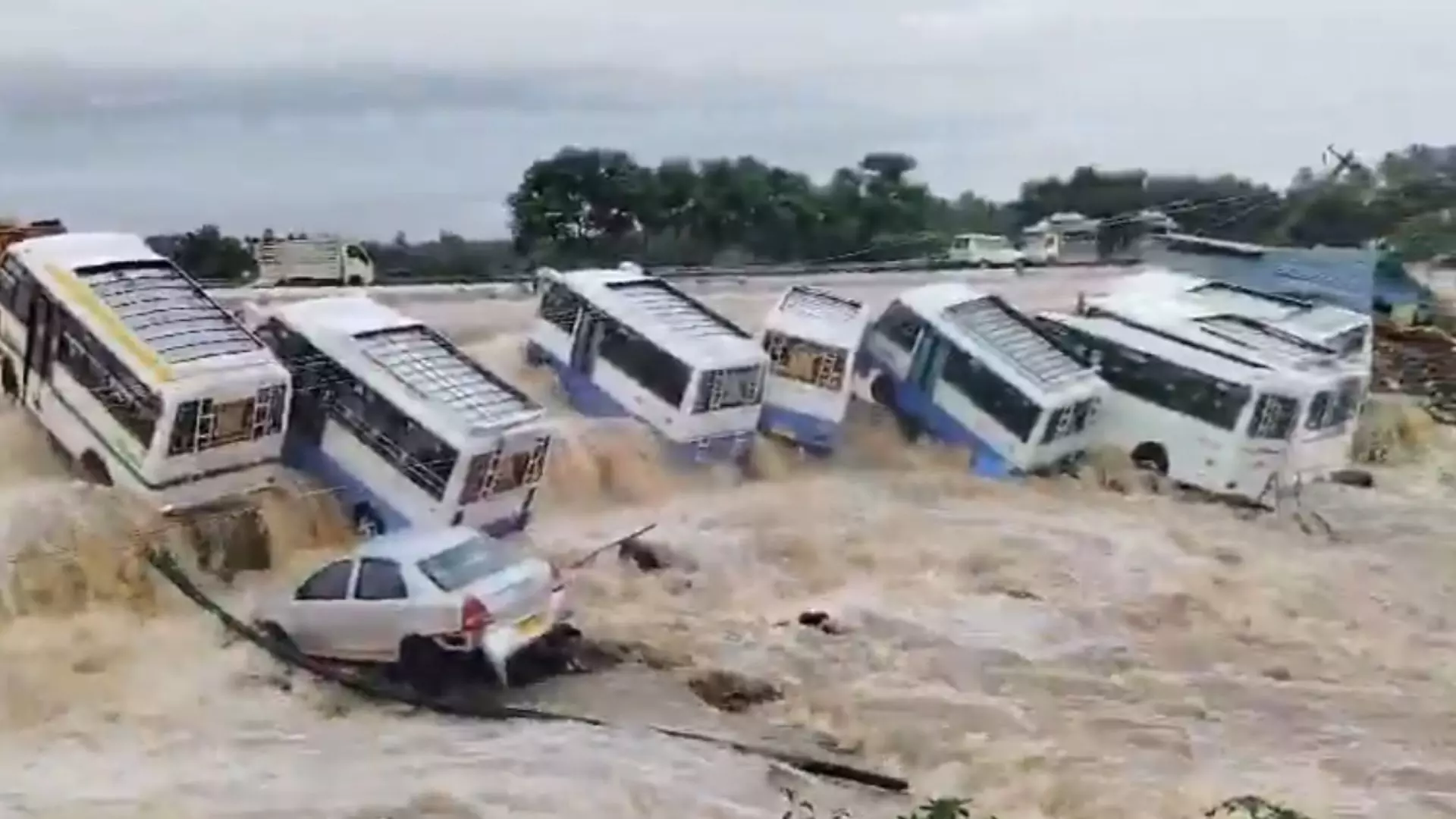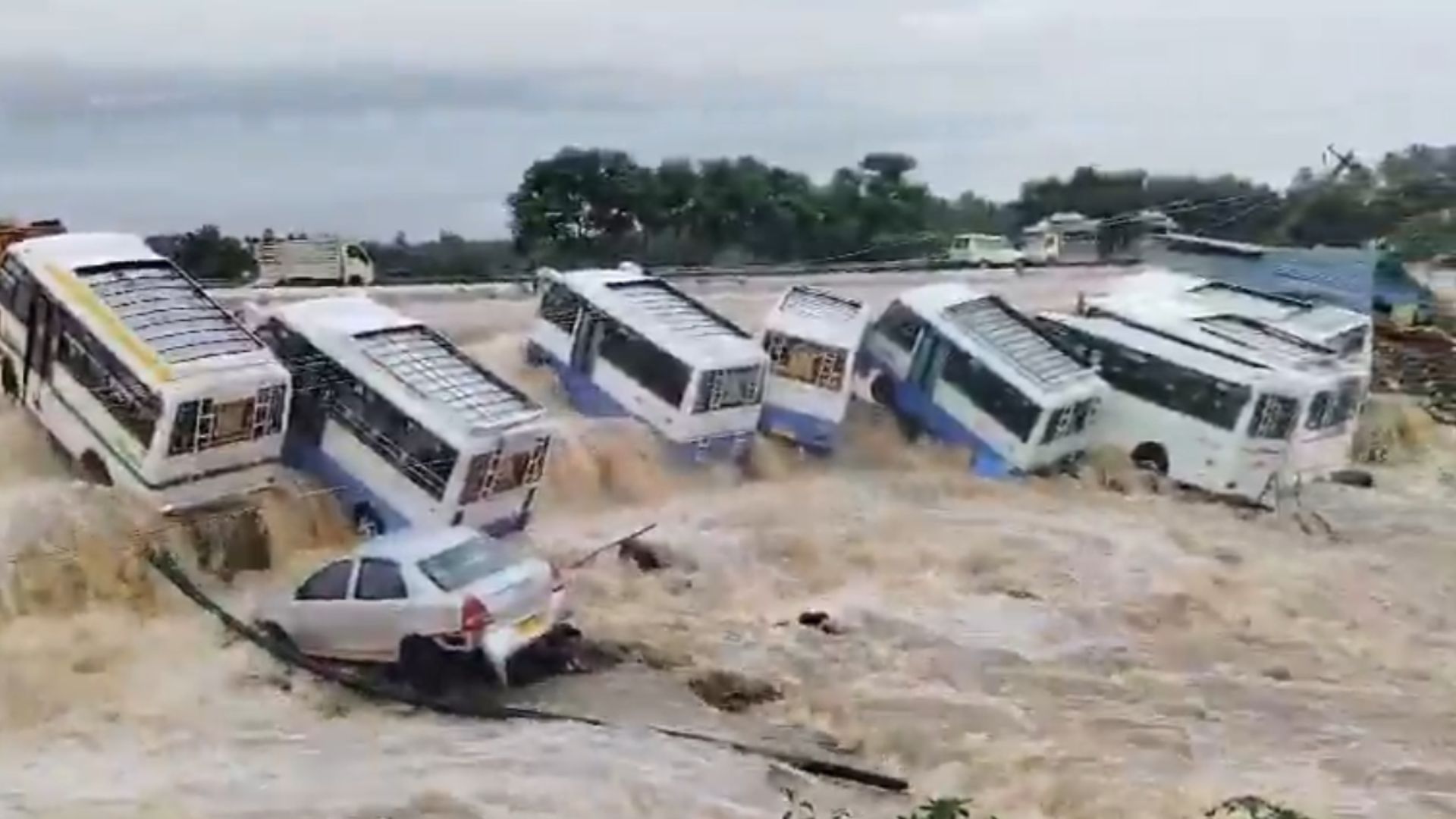
Rain, particularly the harsh variety that causes widespread devastation, is a leveler. It affects everybody and interferes with their routine. But in the realm of politics in Tamil Nadu rain is used as a stick to beat the ruling party. So when it rains, amidst the pitter patter that it causes, there is a howl of anger from various quarters. It happened last week when it rained cats and dogs in some districts of the State. Though Chennai and its surroundings were also affected to some extent, it was in some districts where the skies opened up to bring in one spell a downpour that the place otherwise gets through the year.
When such a situation makes people run helter skelter seeking succor, the habitual critics of the government converge at one point. They find a reason to run down the government or is it a bid to bring it down. Whatever it is, rains in Tamil Nadu have been playing a prominent role in politics as they serve as a weapon for politicking particularly after 2015 when Chennai went under water without prior warning.
In the olden days, when floods strike, someone in government will take a helicopter ride over the affected places to make an assessment of the damage. Since the journey would be shot in camera and the black and white footage screened as ‘news reel’ before the start of a movie in a theatre, people will know about the disaster and sympathize with the victims. Whatever the person who took the helicopter ride would utter would be taken at face value.
But now, at least in Tamil Nadu, if it rains and if it brings devastation, the government is squarely blamed by the opposition parties. Maybe because more people repose more faith now on weather forecasts, which were earlier considered as jokes when announced over Doordarshan or All India Radio. Since the government, too, issues warnings to people based on the weather forecasts that are keenly followed on television, some opposition party leaders think that if devastation happens, the blame should be placed at the government’s doorsteps.
This trend of politicizing disasters had, in earlier years, seen some opposition leaders attempting photo shoots to send across the message that the government had failed to prevent inundation in places where people lived. A particular honcho from an opposition once rushed, despite the discomfort, to comfort the affected people by engaging a boat to reach those places that are otherwise connected by roads.
It’s a different story that the boat had run aground in the extremely shallow water and the leader had stood exposed for staging the drama. Still, accusations are hurled at the government through political statements and social media messages on the official inefficiency in not facilitating the water to drain out in a jiffy and thus inconveniencing the people. Even if the government made arrangements to evacuate people from low lying areas and even housed them in camps, the shrill voice of the opposition would resonate in political circles, always pointing fingers at the government’s inability to not disrupt the people’s lives.
In the latest rain disaster, brought about by Cyclone Fengal, which threw life in a few districts of northern Tamil Nadu out of gear, the government was accused of opening the floodgates of Sathanur dam in Tiruvannamalai district without a warning. Of course the government was quick to deny it and clarify that five warnings were indeed issued by the authorities and that the dam was opened only when the reservoir was filled to the brim. Yet, the charges of procrastination flew from the opposition camp as the excess water that was let into the Thenpennai River caused a deluge displacing people from their homes.
Interestingly, the ruling party went not only into the defensive but also offensive. In its defence it said that there was no loss of life due to the flooding though it happened in the night. It also hit out at the opposition party in whose time the sudden opening of the Chembarambakkam reservoir in Chennai plunged the State capital into a disaster in 2015. So, both the ruling party and the prime opposition party were involved in virtual mudslinging over the Sathanur dam opening, which actually averted a major catastrophe.
A real mudslinging, too, happened with grim political motives during the rains. A minister who went to address the grievances of the people of a village in Villupuram district, was welcomed with a barrage of mud. The real politics behind the incident, which was immediately given due publicity through social media by an opposition political leader with the comment that it showed people’s frustration, came to light much later when the police identified a man and a woman who had hurled the mud. The woman was a member of the same leader’s party.
Though some people warned that such humiliation of political leaders who visited people during times of calamities would only serve as a deterrent for politicians to address people’s grievances, floods of the past had only proved that many politicians would not miss an opportunity to make political hay when it rained. In fact, going by the latest trend, it looks that political leaders seek to score brownie points when it rained. The ruling party by showcasing their efficient handling of the disaster and the opposition by pointing fingers at the lapses.
